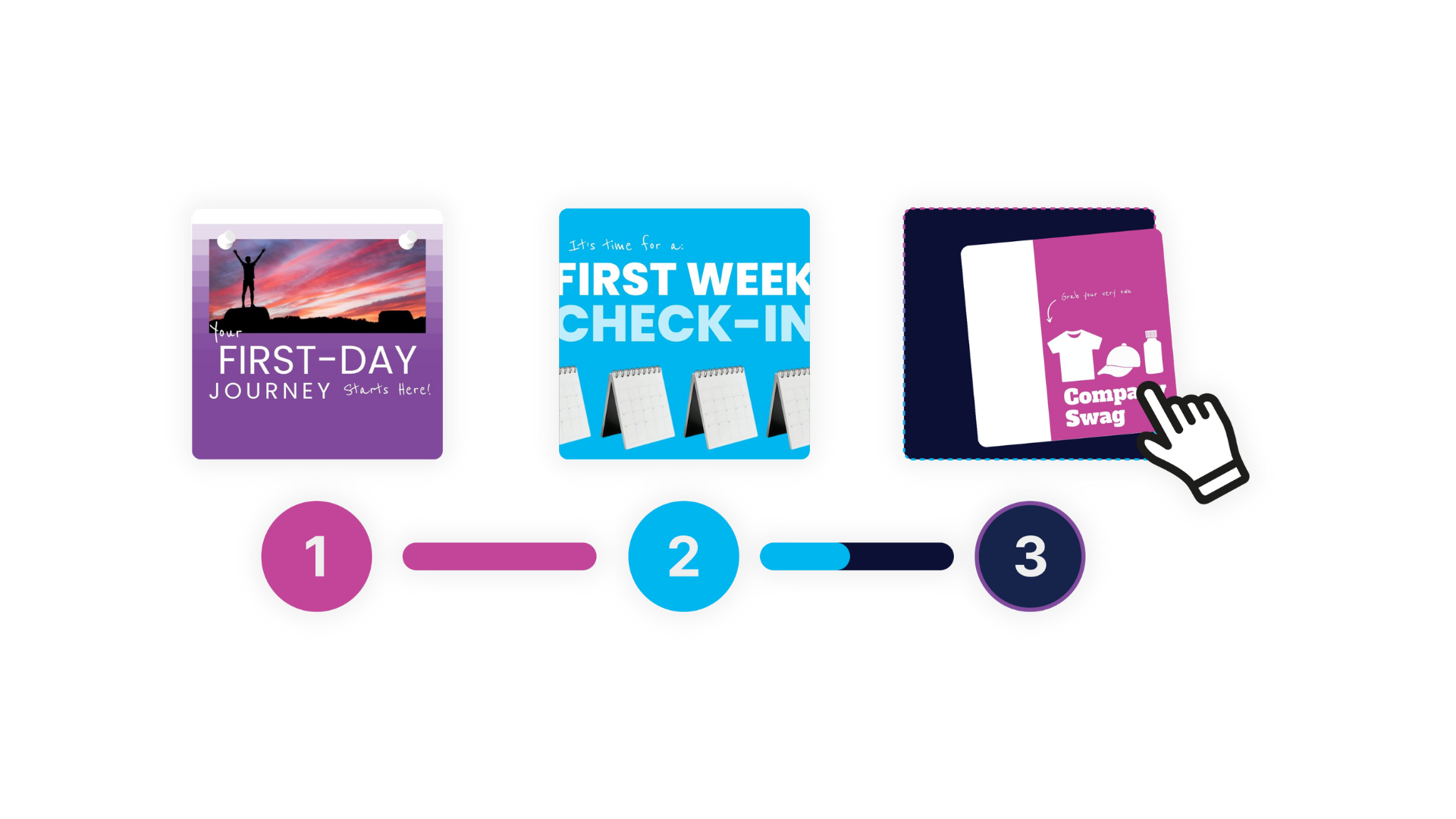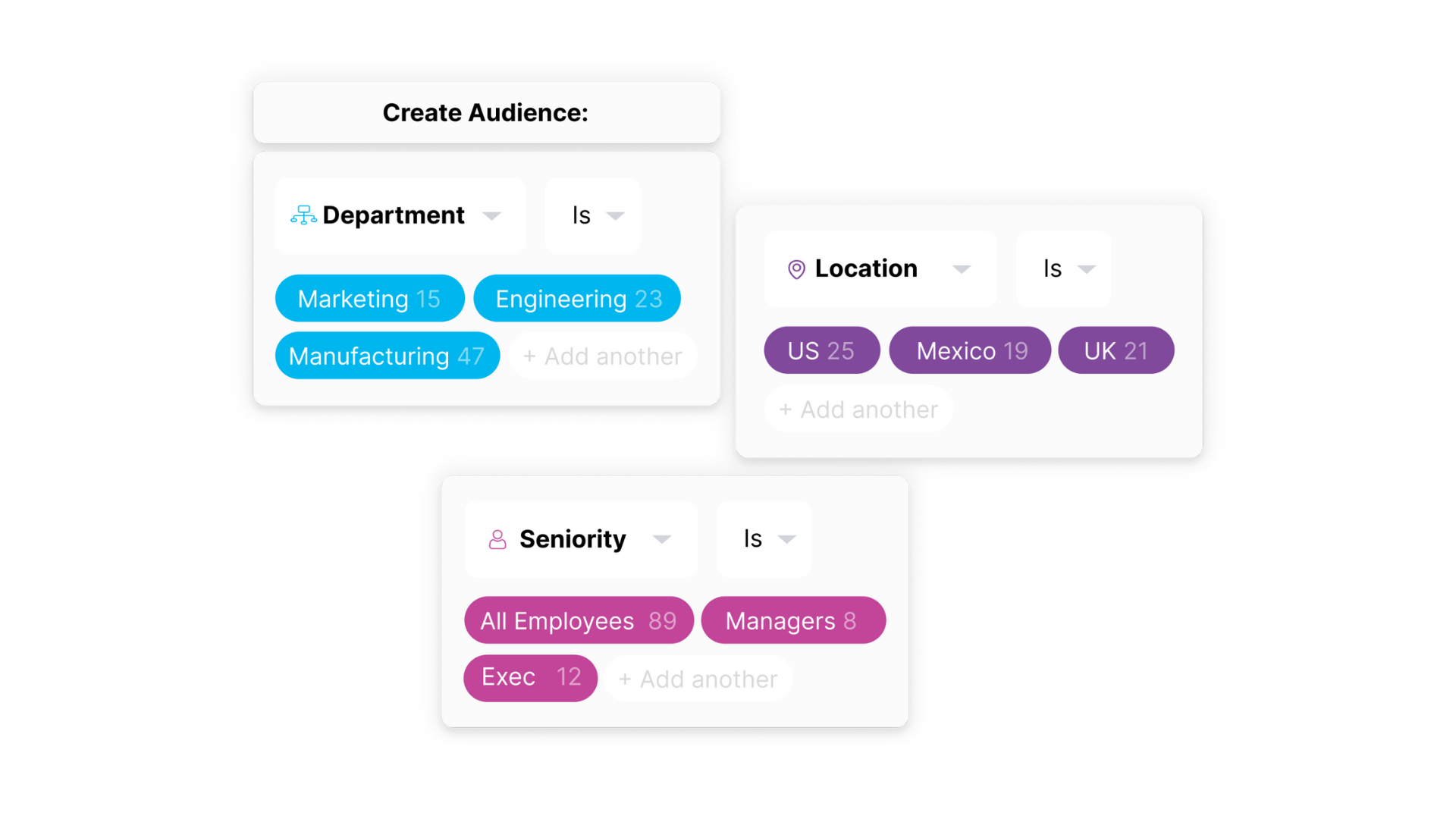How do you align leadership around a rebrand vision? This article simplifies the process, offering strategies on how to align leadership around a rebrand vision, achieve buy in from stakeholders, engage stakeholders, set clear goals, and communicate effectively during your rebranding journey. Aligning leadership is not just about agreement but about cultivating a shared commitment and enthusiasm for the new direction. It involves creating a clear, compelling vision that resonates with leaders at all levels, ensuring they understand the strategic importance of the rebrand and their role in championing it.
Achieving buy-in from stakeholders requires thoughtful engagement, recognizing their concerns, motivations, and expectations. This means tailoring communication and involvement strategies to different stakeholder groups, from executives and employees to customers and partners. Engaging stakeholders early and often helps to build trust, minimize resistance, and foster a sense of ownership over the rebranding process.
Setting clear, measurable goals aligned with the rebrand vision is vital to track progress and maintain focus. These goals should be communicated transparently and revisited regularly to adapt to feedback and changing circumstances. Effective communication throughout the rebranding journey ensures that all parties remain informed, motivated, and aligned, reducing confusion and enhancing collaboration.
By following these strategies, organizations can navigate the complexities of rebranding with confidence, securing leadership alignment and stakeholder support that drive successful outcomes and lasting brand transformation.
Introduction to Rebranding
Rebranding is a strategic process that involves transforming a company’s image, values, and messaging to better align with its current identity and goals. It’s a powerful tool for leaders to update their brand and stay relevant in a rapidly changing market. Effective rebranding requires a deep understanding of the company’s values, mission, and vision, as well as the needs and expectations of their target audience. By rebranding, leaders can strengthen their leadership presence, foster meaningful connections with their audience, and drive positive change in their organization and beyond. Key stakeholders, such as customers, employees, and investors, play a significant role in the rebranding process, and their buy-in is crucial for its success.
Key Takeaways
- Leadership alignment is crucial for the success of rebranding initiatives, as it fosters clear communication and motivates team members towards a unified vision.
- Identifying and engaging key stakeholders early in the rebranding process is essential for securing buy-in and minimizing resistance to change.
- A comprehensive communication strategy, ongoing feedback mechanisms, and a structured implementation approach are vital to maintain alignment and celebrate milestones during the rebranding process.
Understanding the Importance of Leadership Alignment

Leadership alignment is the backbone of any successful rebranding initiative, creating a unified direction that enhances the chances of success. When top leadership shares a clear, common vision, strategic goals are communicated clearly across all levels of the organization, fostering cohesion. This top-down approach ensures that every team member is not only aware of the rebranding goals but is also motivated to work towards them. Putting these alignment strategies into practice can lead to tangible benefits and success, enhancing collaboration and information flow between different departments.
Aligned leaders foster trust among team members, encouraging them to embrace rebranding changes. This trust is crucial, as rebranding often involves significant shifts in the company’s identity and operations. A leader must actively participate in formulating the brand’s strategy and values, embody these values, and guide their cross functional teams through the transition. Without this alignment, even the best strategy can falter, especially when aligning teams.
Alignment within an organization begins with leadership. Executives must not only agree on the rebranding strategy but also be enthusiastic advocates for it. Their enthusiasm can inspire the entire organization to rally behind the effort. Leadership alignment is about active, passionate involvement in the rebranding process.
Importance of Cross-Functional Alignment
Cross-functional alignment is essential for achieving project success and driving business growth. It involves aligning different functional teams, such as marketing, sales, and product development, around a shared vision and goals. By working together, these teams can leverage their unique strengths and expertise to deliver high-quality outputs and drive innovation. Cross-functional alignment also enables companies to respond quickly to changing market conditions and customer needs, which is critical for staying competitive in today’s fast-paced business environment. Key performance indicators (KPIs) can be used to measure the effectiveness of cross-functional alignment and identify areas for improvement. By prioritizing cross-functional alignment, companies can achieve greater efficiency, productivity, and customer satisfaction, ultimately leading to increased market share and revenue growth.
Identifying Key Stakeholders in the Rebranding Process
Identifying key stakeholders is crucial in the rebranding process. Different stakeholders play a significant role as individuals or groups that identify with the rebranding outcome.
Here are some key points to consider:
- Segment stakeholders based on interest, influence, and expectations for effective engagement within the culture.
- Understanding differing priorities helps address resistance and identify areas of concern.
- Securing buy in from everyone is vital for success with the new identity and key performance indicators.
Start by listing stakeholders’ names, roles, responsibilities, and needs to understand who needs to be involved and at what level. Ensuring stakeholder buy-in is critical for project success; lack of it can negatively impact teams, timelines, and results. Understanding each stakeholder’s interests and needs can save hassle in the long run and align the project's goals more effectively.
Engaging stakeholders early in the process reduces uncertainty and enhances collaboration. Managing stakeholder expectations proactively builds trust and confidence during rebranding. Informing internal stakeholders first prevents disenfranchisement. Keeping everyone informed and engaged fosters a sense of ownership and commitment to the project.
Role of Functional Teams
Functional teams play a vital role in driving project success and achieving business objectives. These teams are responsible for delivering specific outputs and services that contribute to the overall goals of the organization. By working together, functional teams can share knowledge, expertise, and resources to drive innovation and improvement. Effective communication and collaboration are critical for functional teams to work effectively, and leaders must prioritize building a culture of transparency, trust, and open communication. Cross-functional teams, which bring together individuals from different functional areas, can also be used to drive specific projects or initiatives and achieve shared goals. By leveraging the strengths of functional teams and cross-functional teams, companies can achieve greater agility, flexibility, and responsiveness to changing market conditions and customer needs.
Establishing a Shared Vision and Goals

A shared vision among leaders mitigates resistance and aligns resources effectively during a rebranding initiative. This unified vision energizes collaboration and directs diverse team efforts towards common objectives. When leaders nurture a shared vision, they embody its values and guide the team through the process using a collaborative approach that was created to enhance teamwork. This idea enhances the overall effectiveness of the initiative.
Effective communication of the shared vision ensures all team members understand and embrace collective project goals to achieve success. Regular updates reinforce the vision and keep it relevant to ongoing efforts, helping maintain focus and drive towards the objectives. Standardizing processes can lead to better communication among stakeholders and create frameworks that improve workflow and reduce errors.
Engaging team members in creating a shared vision fosters ownership and commitment to shared goals. Setting measurable objectives aligned with the vision allows teams to track progress effectively. Addressing fears of change fosters buy-in from resistant stakeholders. By creating and maintaining a shared vision, leaders ensure the entire organization is working to create the same goals.
Developing a Comprehensive Communication Strategy
Developing a comprehensive communication strategy is crucial for the success of any rebranding process. Effective messaging should highlight the reasons for the rebrand and its benefits. Ensuring internal alignment among leadership before a public launch maintains consistency in messaging and branding.
Open and transparent communication about the reasons for rebranding addresses stakeholder concerns. Regular updates maintain enthusiasm and reinforce commitment. Consistent updates prevent misinformation and uncertainty regarding the efforts. Tools like stakeholder maps can help visualize and prioritize key stakeholders for better communication strategies.
Structured updates and brand training programs help employees understand their roles in the brand’s narrative, especially after a rebrand. Utilizing brand enablement tools streamlines the branding process, ensuring all content reflects the new brand identity consistently. Regular training programs reinforce the brand’s narrative and ensure alignment with the new identity.
Building a Compelling Business Case

Building a compelling business case demonstrates the project’s value to each stakeholder and its relevance to their needs. A strong business case outlines the stakes, demonstrating the necessity of a rebrand through both quantitative and qualitative metrics. Explicitly communicating the connection between branding and business performance ensures stakeholders understand their interdependence.
A forward-looking business case should inspire stakeholders by highlighting future opportunities a rebrand could unlock. Providing data and evidence of the rebrand’s potential impact reassures stakeholders. Research similar companies that have successfully rebranded can illustrate the potential benefits, marketing, services, trends, and example of innovation ideas to decision-makers for the company.
Effective leadership alignment drives greater employee engagement, making them more likely to advocate for the brand. A compelling business case helps gain the necessary stakeholder buy-in and support for rebranding efforts. This support is crucial for the project’s success and ensures all stakeholders are committed to the new brand identity.
Creating a New Identity
Creating a new identity is a critical step in the rebranding process. It involves developing a new visual identity, messaging, and value proposition that reflects the company’s updated values, mission, and vision. This new identity must be authentic, relevant, and compelling to the target audience, and it must differentiate the company from its competitors. A structured approach to creating a new identity involves conducting research, gathering feedback from stakeholders, and testing different concepts and ideas. By creating a new identity that resonates with their audience, companies can reposition themselves in the market, attract new customers, and drive business growth. Stakeholder engagement and buy-in are critical for the success of this process, and leaders must prioritize building a collaborative approach that involves key stakeholders in the decision-making process.
Gathering Feedback and Addressing Concerns
Gathering feedback from stakeholders aligns projects with their needs and expectations. Monitoring feedback addresses concerns and adapts strategies accordingly. Using anonymous feedback channels encourages stakeholders to share critical insights without fear.
Regularly scheduled feedback opportunities integrate stakeholder input naturally into project workflows. Updates should highlight both successes and challenges, promoting transparency and building trust. Following up to gather feedback is crucial for maintaining involvement and trust.
Implementing feedback loops facilitates continuous improvement and enhances stakeholder engagement. Gathering feedback and addressing concerns ensures rebranding efforts align with stakeholder needs and expectations, increasing the likelihood of project success.
Creating a Structured Approach for Implementation
A structured approach for implementation is essential for a successful rebranding effort. Launching a rebrand should include clear communication of timelines and stakeholder expectations. A detailed transition plan should outline key branding elements such as messaging, visual identity, and customer engagement strategies.
A structured approach ensures all aspects of the rebranding are covered and there is a clear plan to establish implementation. This minimizes confusion and ensures all stakeholders are on the same page throughout the process.
Providing Regular Updates and Celebrating Milestones
Regular updates keep stakeholders engaged and informed throughout the rebranding process. Maintaining momentum through updates helps align leadership and keeps the focus on the rebrand vision. Regular updates prevent misinformation and maintain enthusiasm among stakeholders.
Celebrating key achievements during the rebranding process enhances team morale and fosters a collective sense of purpose. Reinforcing employees’ contributions to brand success through rewards and engaging events helps sustain internal brand alignment. Recognizing and celebrating milestones keeps the team motivated and focused on the goals.
Building a Strong Brand Foundation
Building a strong brand foundation is essential for achieving long-term success and growth. It involves establishing a clear and compelling brand vision, mission, and values that resonate with the target audience. A strong brand foundation must be built on a deep understanding of the company’s unique strengths, weaknesses, and differentiators, as well as the needs and expectations of their audience. By prioritizing continuous improvement and innovation, companies can stay ahead of the curve and adapt to changing market conditions and customer needs. Effective communication and stakeholder engagement are critical for building a strong brand foundation, and leaders must prioritize creating a culture of transparency, trust, and open communication. By building a strong brand foundation, companies can achieve greater credibility, trust, and loyalty with their audience, ultimately leading to increased market share and revenue growth. Valuable insights and feedback from stakeholders can be used to refine and improve the brand foundation over time, ensuring that it remains relevant and effective in driving business success.
Best Practices for Sustaining Leadership Alignment
Sustaining leadership alignment post-implementation is crucial for long-term success. Transparency is vital in maintaining stakeholder engagement as it builds long-term, trusted relationships. Actively listening to stakeholder concerns strengthens relationships and builds trust.
Monitoring brand perception and gathering feedback after the launch refine the branding strategy and address emerging issues. Continuous improvement and trust-building strategies are essential for maintaining alignment and ensuring the success of the rebranding effort.
Common Challenges and How to Overcome Them
Challenges in gaining stakeholder buy-in include recognizing obstacles and developing response strategies to gain buy in. Good relationships with stakeholders help manage challenges and problems during a project. Close collaboration and stakeholder support are essential for managing project risks.
Internal brand aligning is an ongoing process requiring continuous maintenance and reinforcement. Awareness of challenges and strategies to overcome them increase the likelihood of stakeholder buy-in, cross functional alignment, and project success. To develop this alignment effectively, organizations must remain vigilant and proactive.
Summary
To sum up, aligning leadership around a rebrand vision is essential for the success of the rebranding process. From understanding the importance of leadership alignment to addressing common challenges, each step plays a critical role in ensuring that the rebrand is successful and that all stakeholders are committed to the new brand identity.
By following these strategies and best practices, you can create a cohesive and compelling rebrand that resonates with both your team and your audience. Remember, the key to a successful rebrand is not just in the strategy but in the alignment and commitment of leadership and stakeholders.
Frequently Asked Questions
Why is leadership alignment important in the rebranding process?
Leadership alignment is crucial in the rebranding process as it fosters a unified direction, enhancing the likelihood of success by ensuring that strategic goals are effectively communicated throughout the organization. This clarity helps to mobilize resources and focus efforts towards the rebranding objectives.
How can we identify key stakeholders in the rebranding process?
To effectively identify key stakeholders in the rebranding process, segment them by their interest, influence, and expectations while documenting their names, roles, responsibilities, and needs. This structured approach ensures that you recognize those who will impact or be affected by the rebranding effort.
What are the benefits of a shared vision in rebranding?
A shared vision in rebranding enhances collaboration and reduces resistance, ensuring that all resources are effectively aligned toward achieving common goals. This unified approach fosters a strong commitment to the rebranding process.
How can we gather and address stakeholder feedback?
To effectively gather and address stakeholder feedback, implement anonymous feedback channels, schedule regular opportunities for input, and consistently follow up to ensure ongoing engagement and trust. This approach fosters open communication and demonstrates commitment to stakeholder concerns.
What are common challenges in gaining stakeholder buy-in and how can we overcome them?
Common challenges in gaining stakeholder buy-in include recognizing obstacles and maintaining good relationships. These can be overcome by developing response strategies and ensuring continuous alignment with internal branding.















